Those of you who like my earlier book of lace patterns will LOVE this one. Rest assured, no two patterns are the same. These are 77 new motifs. My excellent editor, Ruth Temple, included a table of contents as well as a pictorial table of contents, so you can more easily browse and find what you want. Click on an image in the photo table of contents, and you jump to the right page for the pattern and chart in the 200 page document.
Now, on to organizing other lace patterns I've written over the past 16 months ... Wanting to de-mystify sprang lace. Hoping to see lots of images of sprang lace, inspired by this publication.
1 Comment
Ouff! last week went by very fast at the MAFA conference. It was lovely to be able to teach, give talks, and interact with a fellow textile enthusiasts as well as continue to spread the word about sprang and all its possibilities. I have been learning over the past year how to teach virtually, although I do miss teaching in person. I am looking forward to being able to travel soon (when it is safe to do so). Thank you to everyone who attended my MAFA classes and talks. And thank you to all the organizers that made this event possible! If you get the sprang bug and would like to know more there are lots resources, books, DVDs and classes. To see the options and to sign up, check out my website www.SprangLady.com
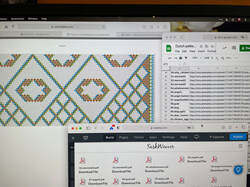 I’ve been working on these Dutch lease patterns since March 2020. I’m finally putting the final touches on what will be a ebook starring 73 lace patterns inspired by the Dutch collection (source mom?) In order to make these patterns as accessible as possible The e-book will come with downloadable high resolution PDF patterns to accompany the word instructions for each lace pattern. This will allow you to zoom in as close as you want as well as print at any scale you like. Still haven’t chosen a release date but stay tune for more information. Keep spranging along!
I've taken the plunge, and gone to on-line teaching. Running a couple of pilot classes, I am stunned to report that the on-line classes seem to be going very well. The woman who said she'd be my problem child is busy sprang-ing away. I used to teach knitting for the municipal adult-education program. The introduction to knitting class was always six weeks long, meeting 2 hours at a time, once a week. I have long thought that people would do well learning sprang according to such a schedule. Because of COVID, this is now possible. As I say, I've been running a couple of pilot projects with great success. This has led me to now offer a class, open to members of the public who are willing to pay the tuition of $200, plus shipping for the materials. For that price you receive an already-warped sprang frame, a copy of my book Sprang Unsprung, a copy of my DVD Introduction to Sprang, and an assortment of other bits and pieces, shed sticks, rubber bands, beads, spring clips, which you might find useful as the class goes on. We cover a wide set of possibilities during the six weeks of class, covering flat warp, circular warp, and several finishing methods.
People who have taken my 3-day intensive workshops, and who have also been observers in my six-week pilot classes highly recommend the six-week on-line class. Having that time to practice between classes allows the information to sink in. I have the sense that the six-week class gives people the support they need to get comfortable with the technique, to the point that you can become creative with it. My goal is to make sprang as commonly known as knitting and crochet. If you're interested, check out the registration form at http://www.spranglady.com/store/p86/Intro_to_Sprang_On-line I've been spending a great deal of time with my camera and computer, composing PDF instruction sheets, and pairing these with videos, outlining various aspects of sprang. Yes, I've already published books and a DVD ... but it seems people want a human presence as they work their way through. Bending to requests for on-line teaching, I've run a few pilot projects, teaching sprang on-line. To my great surprise, it seems to be successful. People are learning to manipulate threads by chatting with me over Zoom ... supported by videos and PDFs ... nevertheless, gaining confidence with the technique. I used to teach knitting through a city recreation program. The beginning knitting class was always a six-week long course, meeting 2 hours per week. It has often occurred to me that sprang could/should be presented the same way. In the past I almost always traveled to a place to teach. The sponsoring organization would request that I compact the instruction into perhaps a 3-day course. I often saw that participants felt overwhelmed with the information. My pilot projects have offered instruction in that same once-a-week-for-several-weeks format ... to great success.
I am pleased to announce that I am gaining confidence in this presentation method. I will be offering a class that will meet on Thursday evenings, starting March 4, and running for 6 Thursdays. The materials fee will include an already-warped sprang frame ... as this is how I usually teach. We begin with the basic stitch (and not with warping). Yes, there will be a bit of cost to post that frame to you ... but not insurmountable. If you are interested in this six-week introduction to sprang, go to http://www.spranglady.com/store/p86/Intro_to_Sprang_On-line For those who have already attended a class, who feel they have the basics, but who want a bit of help to start exploring, I have something for you as well. Discussions with many former students have revealed an interest in a kind of on-going supported sprang challenge. My website now offers a 12-month subscription that gives you instructions on making a sample, and then, based on that sample, helps you calculate number of threads and length of initial warp, so that you can make a neckscarf, pair of fingerless mittens, or hat. Each month features a different "stitch" or sprang structure, complete with an instruction sheet and how-to video. ... and there are "bonuses" such as methods to reduce the size of the loops at the edges, instructions for false-circular warp, lace pattern writing, and more. And there will be a monthly Zoom meeting where we can chat. If this interests you, check out https://www.spranglady.com/store/p80/The_SprangLady_Subscription-2021.html It's been a while since I last posted. I've not been idle. I've been working my way through some very different territory. I last posted about some sprang lace patterns. Work on those continues. I believe I've written over 300 ... but it depends on how you count ... when I write patterns for alphabet letters, does that count as a single large one, or 26 (or is it 52 because there are capital and lower case)? A big Thanks to Ria Hooghiemstra and Debbie McClelland who have made numerous samples, caught countless errors, and made superbe suggestions. And then there's the editorial work of organizing the patterns with some kind of consistency so that others can use them. Big Thanks to Ruth Temple who is helping out on that score. I've also been exploring ways to teach on-line. I've written out a number of new instruction sheets, and have set up a couple of pilot projects to test out ways to teach by Zoom. Very important is to figure out how to place cameras, where to sit, where to place the lights .... all necessary to get a good focus on my fingers to communicate to you how to work the stitches. A long time ago I used to teach knitting. It was a six week course to give a class the basics, develop the skills to start to feel independent with the technique. My instinct is that learning sprang is the same thing. The problem is that guilds invite me to travel to teach in their town. A six week long, once-a week class is just not in the discussions. But now that I'm thinking about teaching on-line .... And yet another project (after much encouragement from my excellent daughter Claire) has me looking at a subscription based do-a-long. I have heard from many students, yes, they took the class, and yes they felt they learned a great deal in the class, but sitting here with a ball of yarn in one hand, a sprang frame in the other, and an idea in the head, and just can't seem to get to making it all happen. More than one former student has described this state to me. I put it back to the crash course I've always taught ... a class that is extended over weeks, would give time to absorb information better ... nevertheless what to do for people who had to endure a crash course. I've been hearing that you can sign up for a year's worth of cross stitch patterns, or knitting patterns, or quilting patterns. My daughter has encouraged me to design a program for those of you interested in exploring sprang. The key to making something that ends up the size you want is, to start by making a swatch. I'm working on a series of twelve different sprang stitches, each with a swatch. Membership in my at-present-theoretical sprang subscription would give you support to try a new stitch each month, make a swatch, and then make a neckscarf based on that swatch. Yes, there's a pattern for a Mobius scarf, as well as for a hat, and another pattern for mittens included in the membership.
You could have a whole series of swatches. If you use the same yarn and the same number of stitches, you will have a document of different stitches and their various gauges with that yarn. You could also have a lovely collection of neckscarves of a variety of stitch patterns. I am thinking I could also add some Zoom meetings for Question and Answer sessions as part of the subscription. I want to get people to use the sprang technique. For now, my website has a button on the top, allowing you to "login". Just now that puts you on a mailing list, and you'll be sure to hear from me when this subscription thing really happens ... hopefully by mid-January 2021. If you're interested, login. And one more thing. As a member of The Braid Society who is also an instructor, I'm offering an on-line tutorial on the subject of sprang starting January 4, 2021. If you're interested, sign in to the discussion group that is braids and bands.io or https://groups.io/g/braidsandbands/ The tutorial will feature the very basics of sprang ... no frame needed ... and it's free for all those participating in that group. People have been asking me for an electronic version of my books, and I've finally given in.
Taproot Video is an instructor co-operative, and they now have the capacity to offer books in this format. My books Fingerweaving Untangled and Sprang Unsprung are now available on the Taproot Video site as down-load-able PDF e-books. As an added bonus, I've created a left-handed version of Fingerweaving Untangled. The genesis of that book was a set of instruction sheets, created for the first class I taught in fingerweaving. A couple of students in that class were very right-handed, and complained that my directions were backwards, and very awkward for them. Bending to their advice I flipped all the drawings and edited the instructions to satisfy them. This left-handed edition of Fingerweaving Untangled returns to the original drawings and instructions. Available only at Taproot Video https://taprootvideo.com/instructorClasses.jsf?iid=7 Since I've got time on my hands, all travel plans cancelled, I figured I should put my efforts to a project worthy of a great deal of time ... all those lace patterns. I've seen sprang lace in a number of collections, have photographed them, and have made some samples. Now is the time to sit myself down and to go through these, one by one, and render patterns that will be read-able to others. The inspiration for these patterns come from several sources. There's that book of sprang sashes, repaired by Coby Reijndeers-Baas, sashes with all manner of designs, people, boats, deer, mermaids, and a variety of geometric designs. Then there is that collection of lace from the Cinquantenaire Museum in Brussels that I visited back in 2013. Other lace patterns come from pieces in the British Museum, the Victoria and Albert Museum, the Petri Museum, and assorted other collections.
I'm working on putting the patterns onto a grid, so you'll have a grid pattern. From that grid, I'm deriving a "written pattern" that will read "right-edge stitch, 3 plain stitches, left-edge stitch". Having done that, I then set up a warp and make an actual sample, to check my pattern, and to be reasonably sure that the pattern is correct. I'd be very happy to have others check these patterns. If you're interested, send me a message by commenting on this blog, or to the "contact me" on this website. I made myself a new sprang shirt, using a 5/2 mercerized cotton from Lunatic Fringe, leftovers from other projects. Inspired by the stitch pattern in a Ukranian belt, I made vertical stripes in the body. In essence the pattern is two rows of interlinking and one of interlacing ... that means, for example, two rows of Z, and one row of S, then another 2 rows of Z, and one row of S. The body began as a 7 ft warp, some 300 loops (600 threads). I set it up as a false-circular warp, working from hem towards the shoulders. Just beyond the armpit level, I switched to 2/2 interlacing. The interlacing is less stretchy, quite appropriate to the yoke of the shirt. Because I also doubled the threads, it created a slight gathering, meaning the yoke is narrower than the body of the shirt. I made the two sleeves at the same time, cutting threads to create the desired shape. The collar is a piece of circular-warp sprang. I calculated that I needed some 24 inches of collar, and started with a 32 inch long circular warp.
|
Categories
All
Archives
May 2023
Categories
All
|
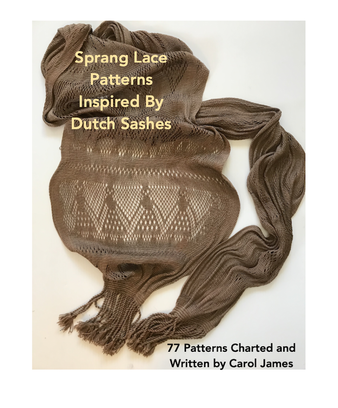
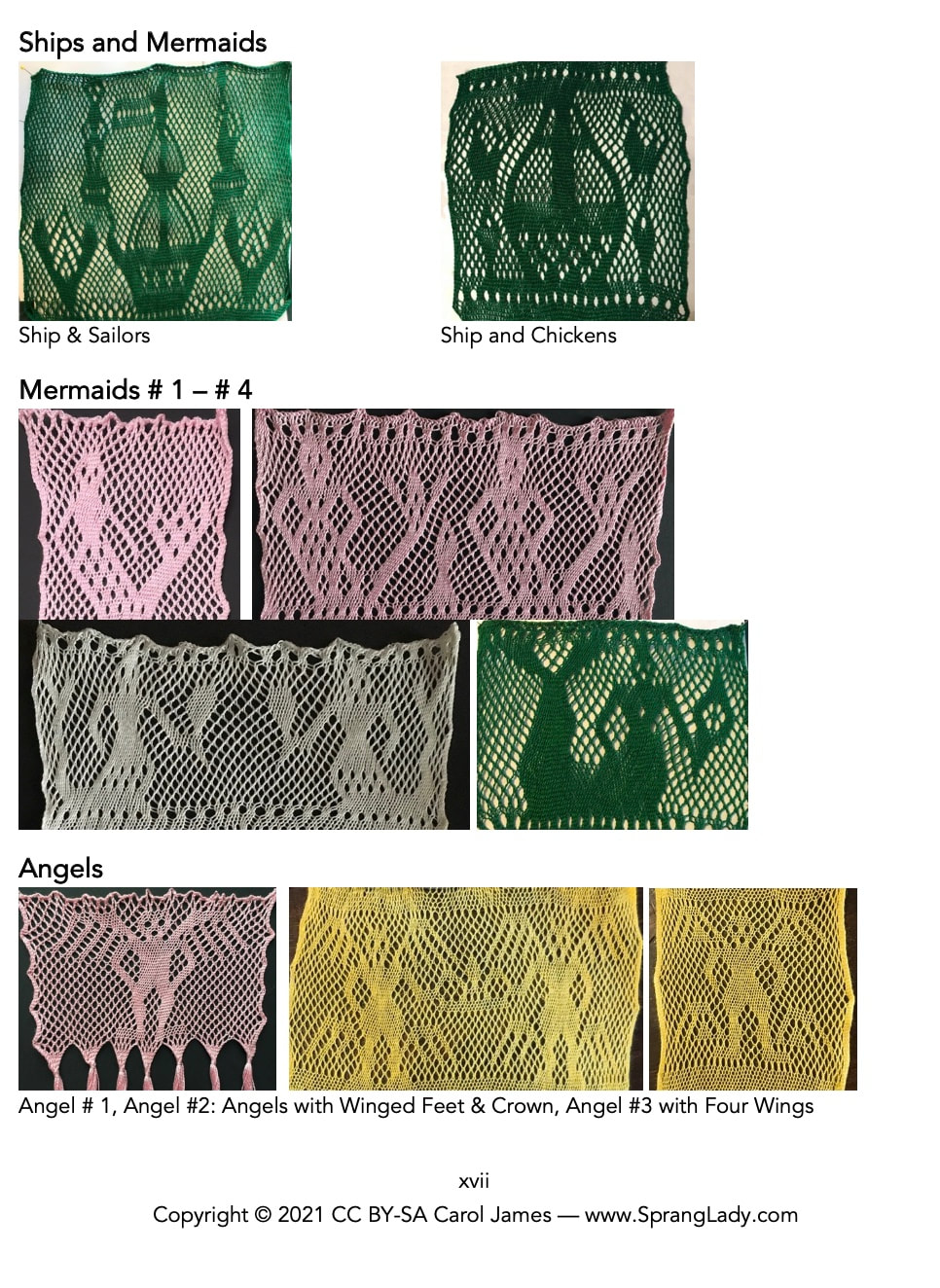
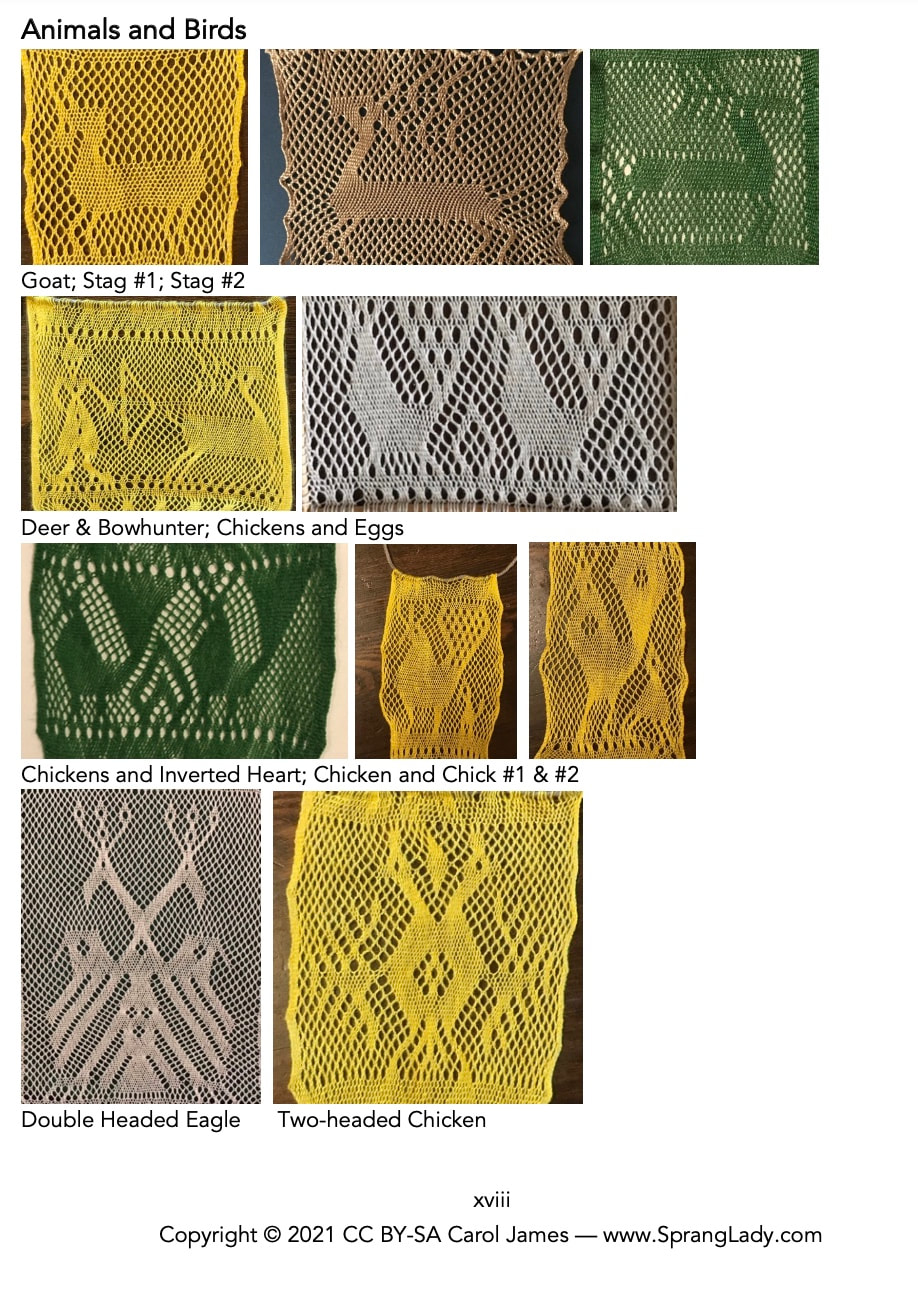
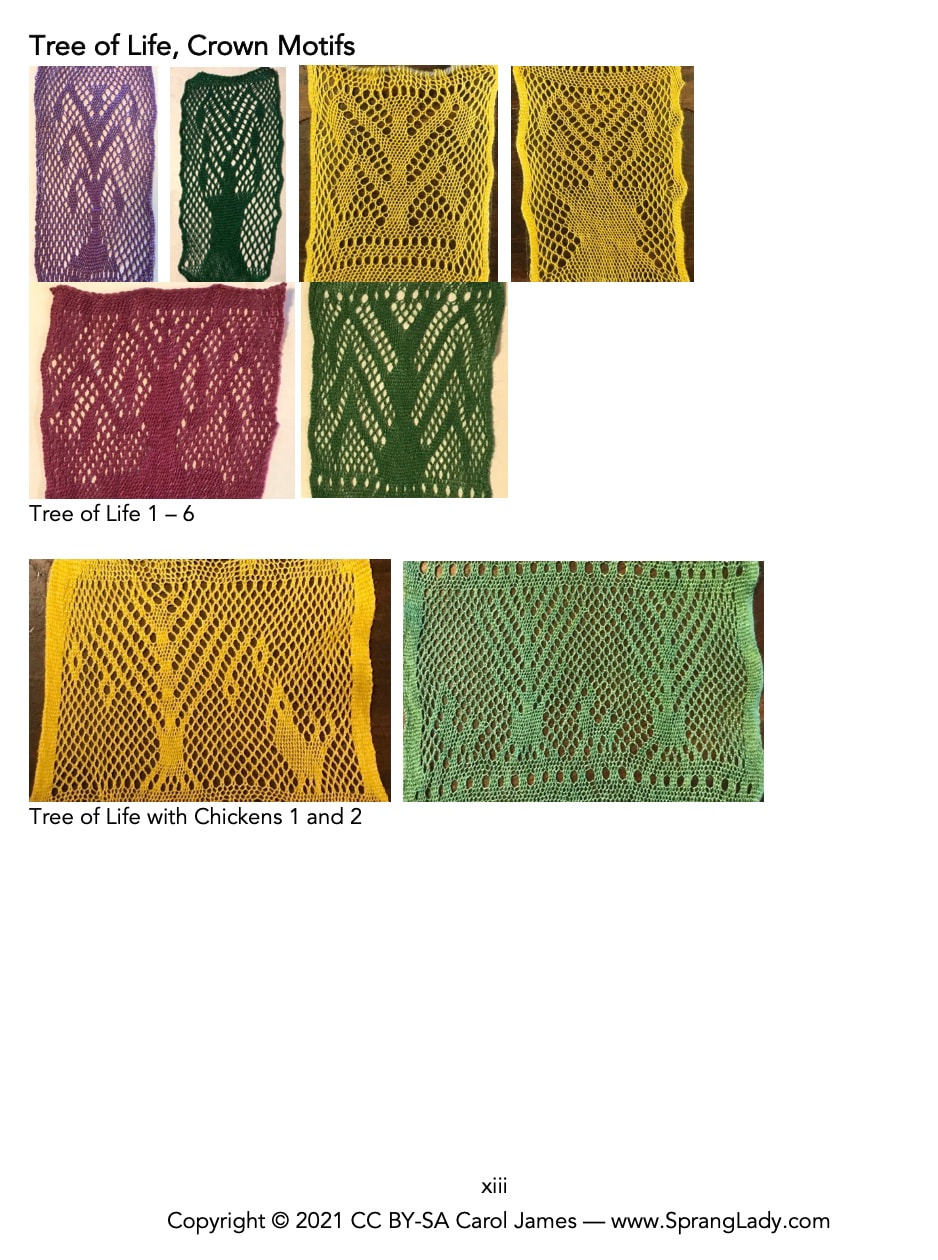
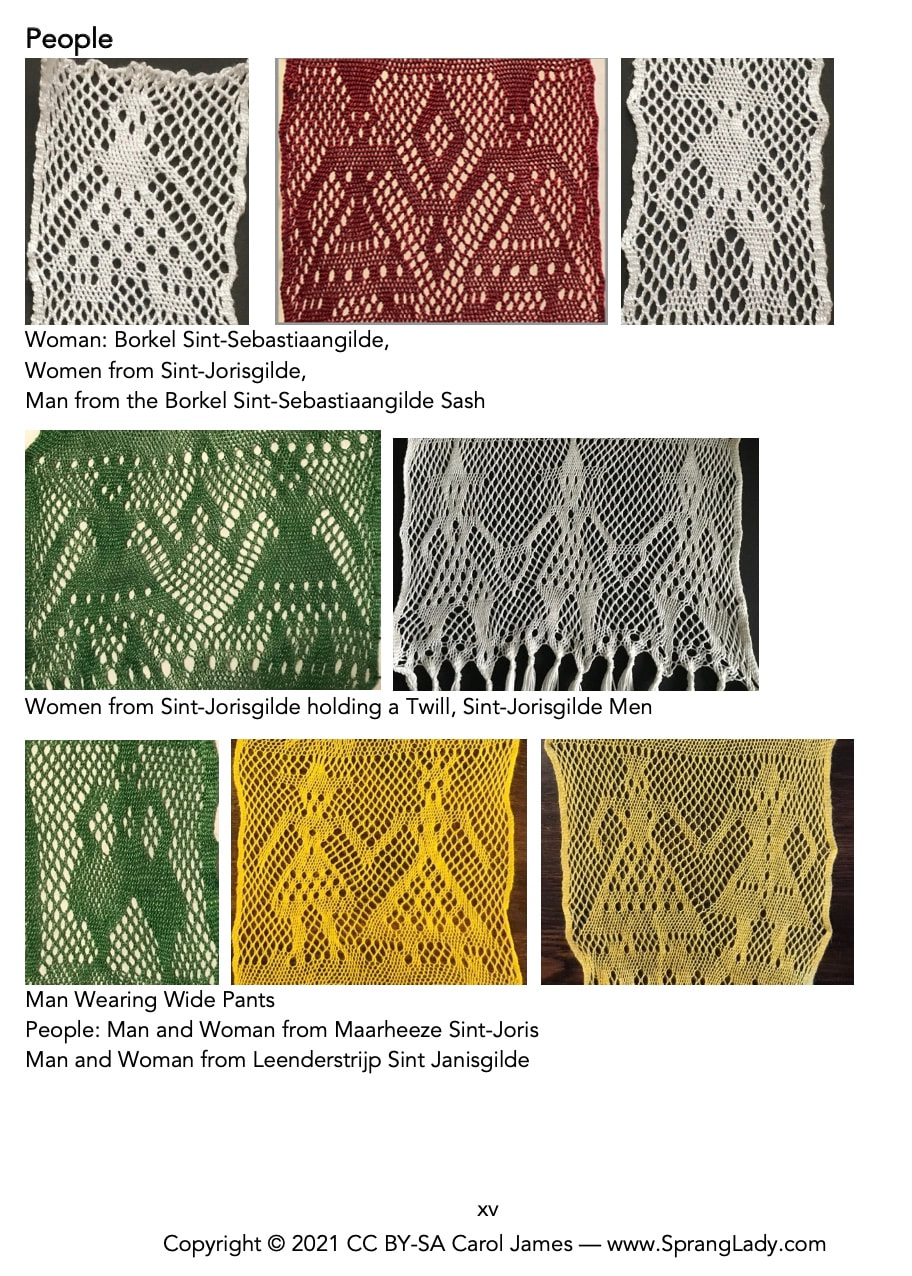
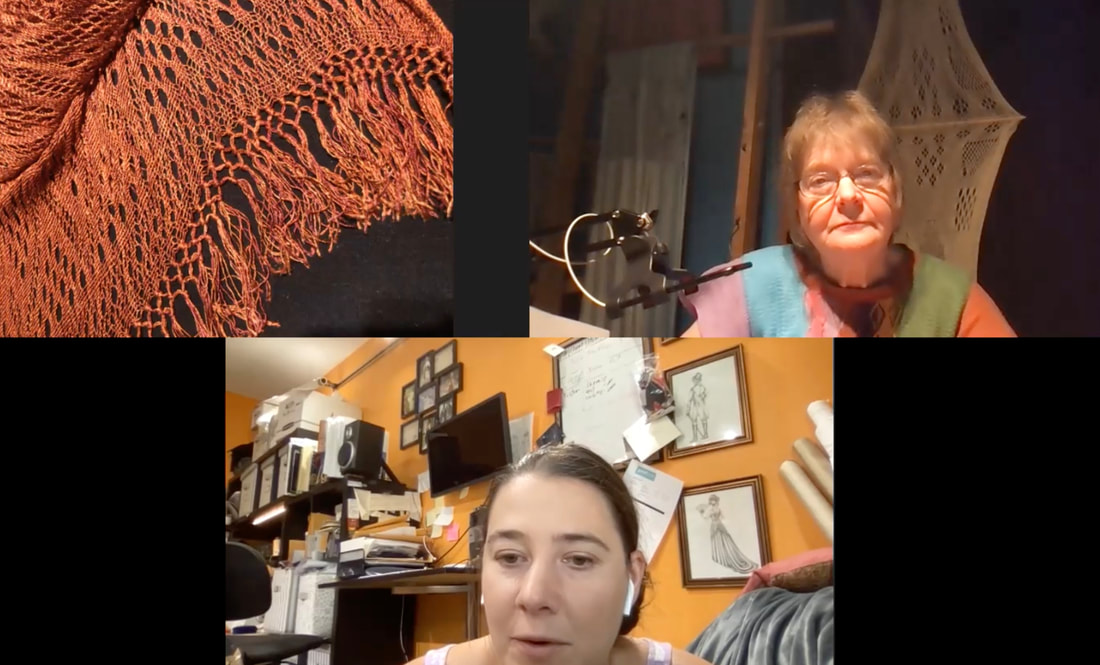
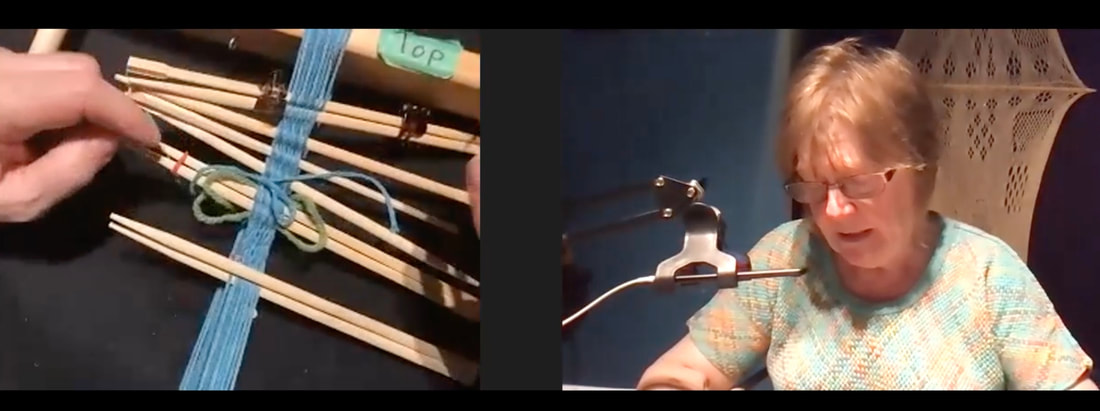
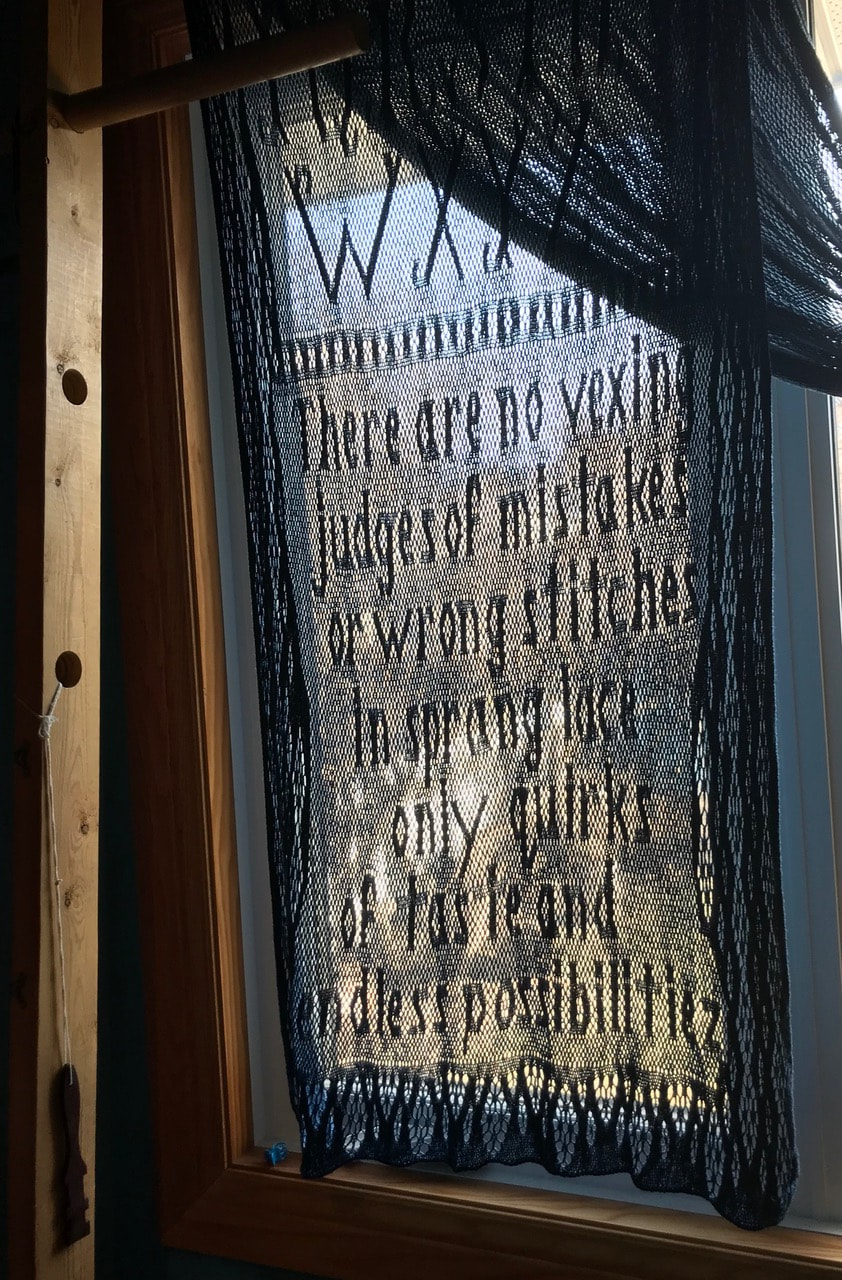
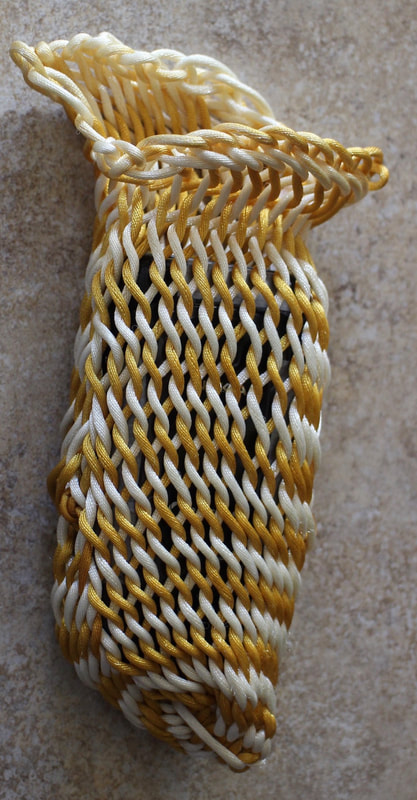
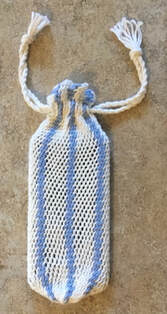
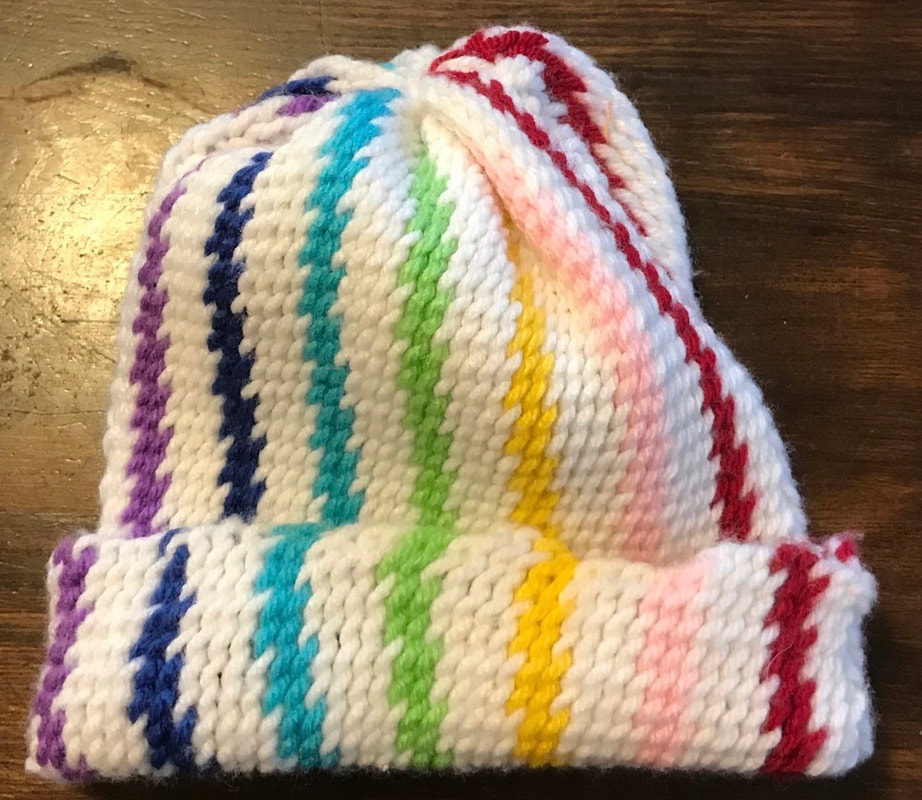
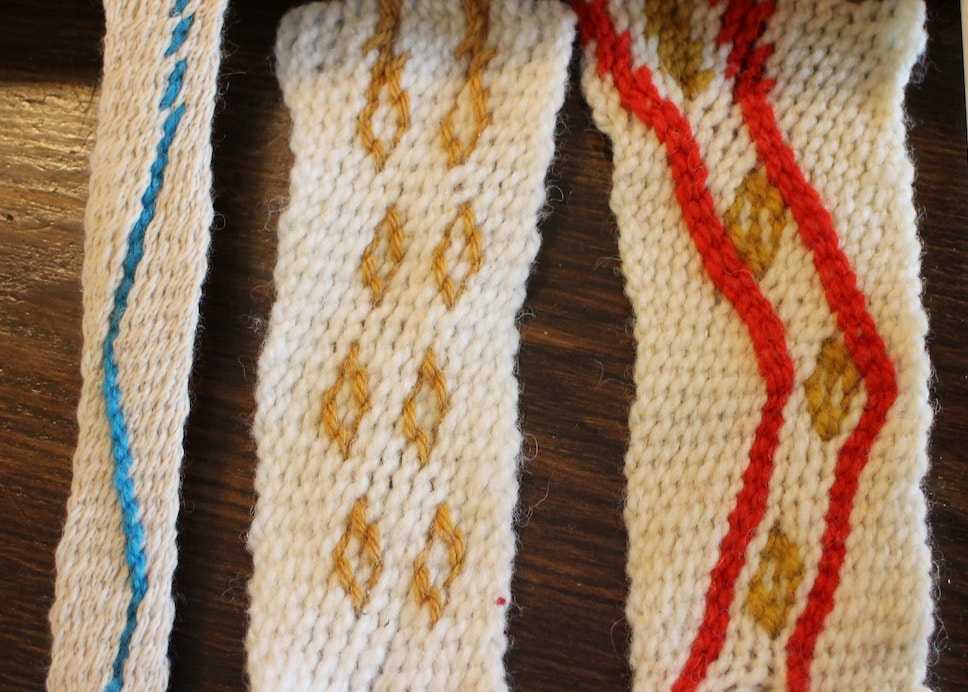
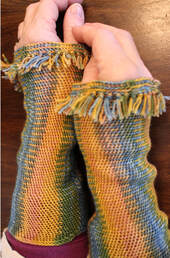
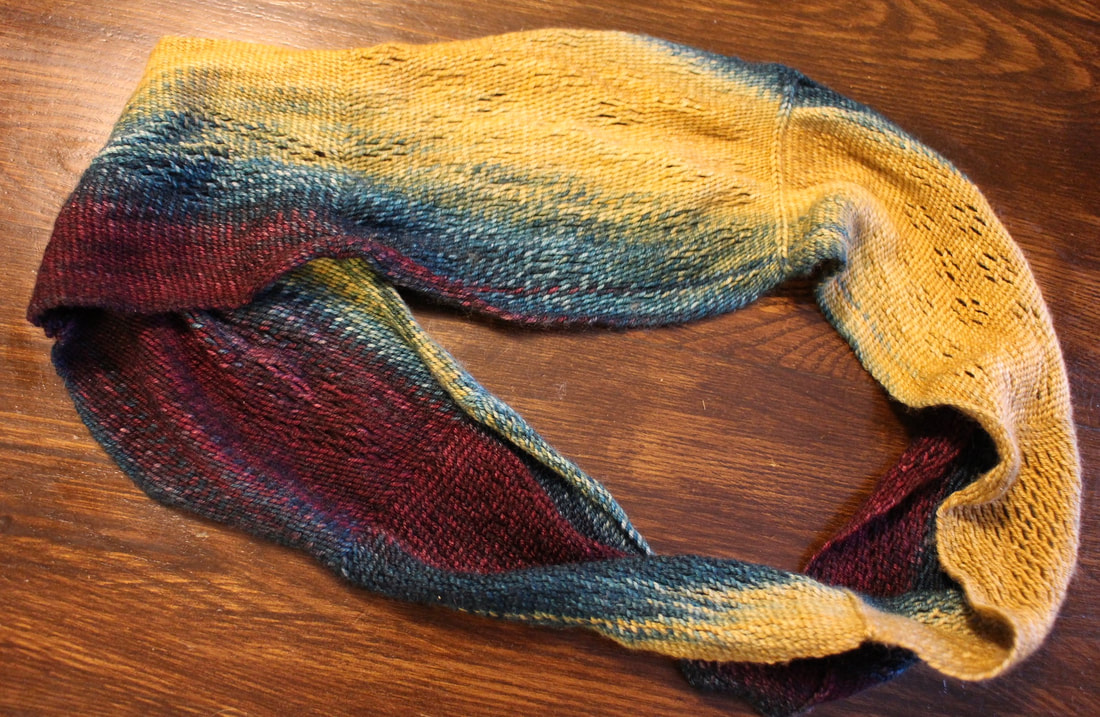
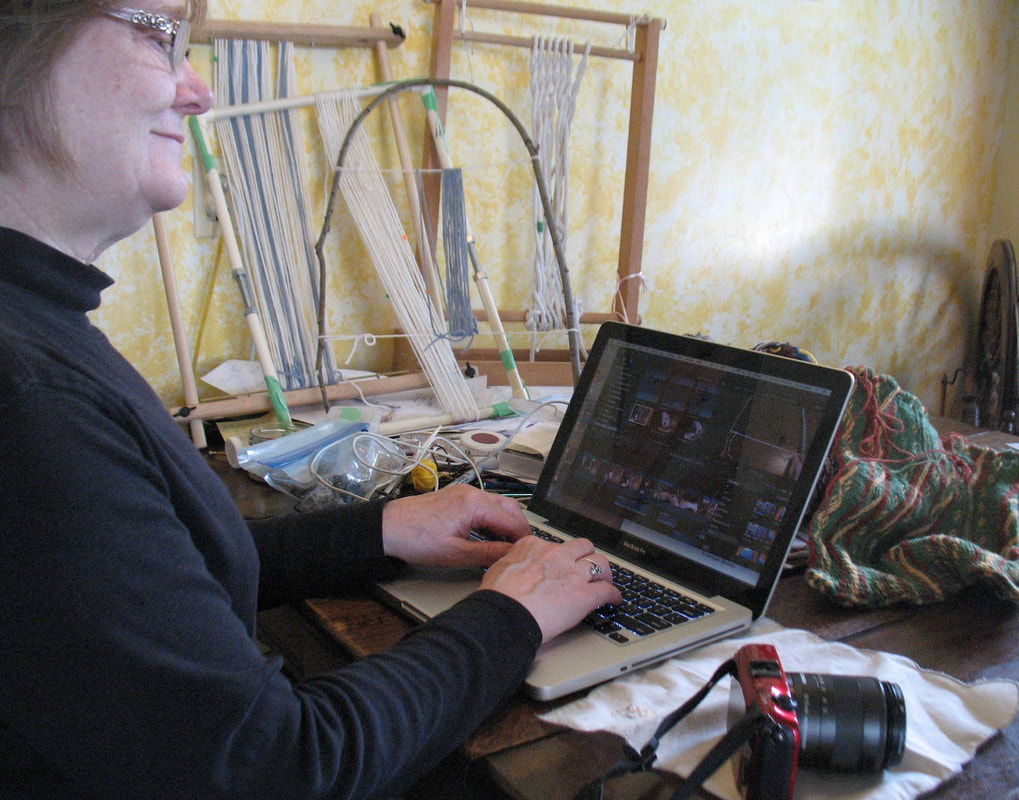
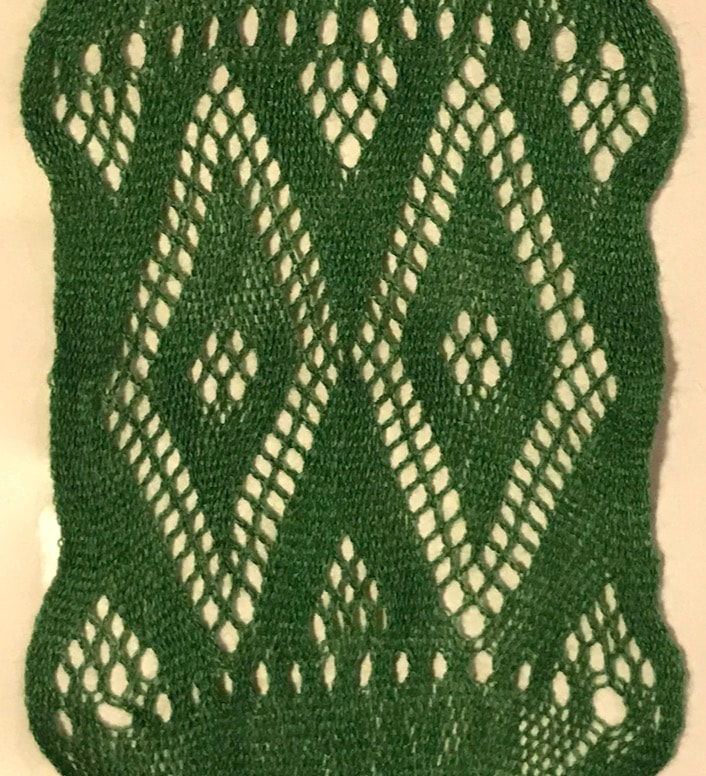
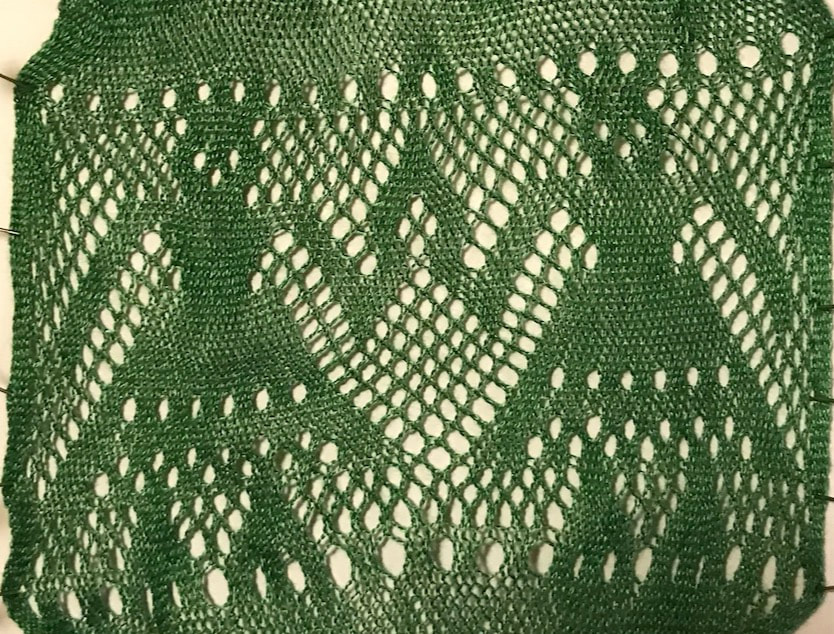
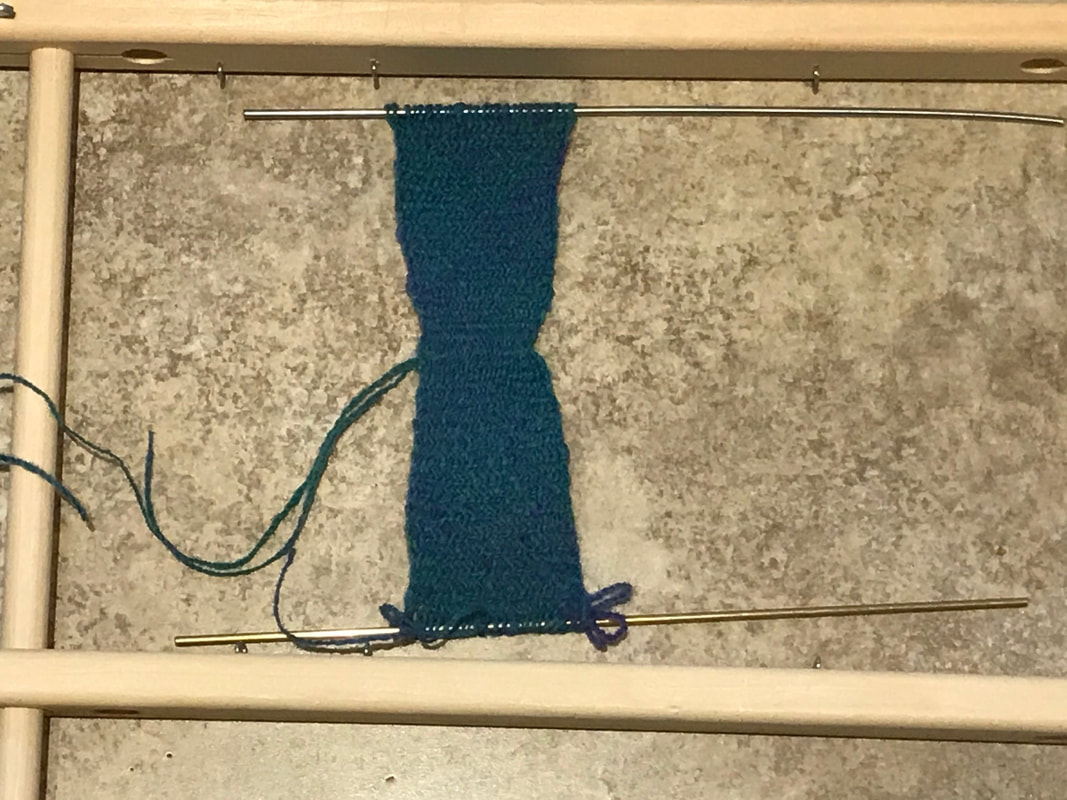
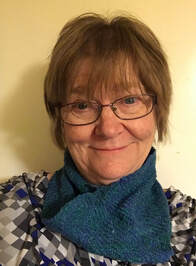
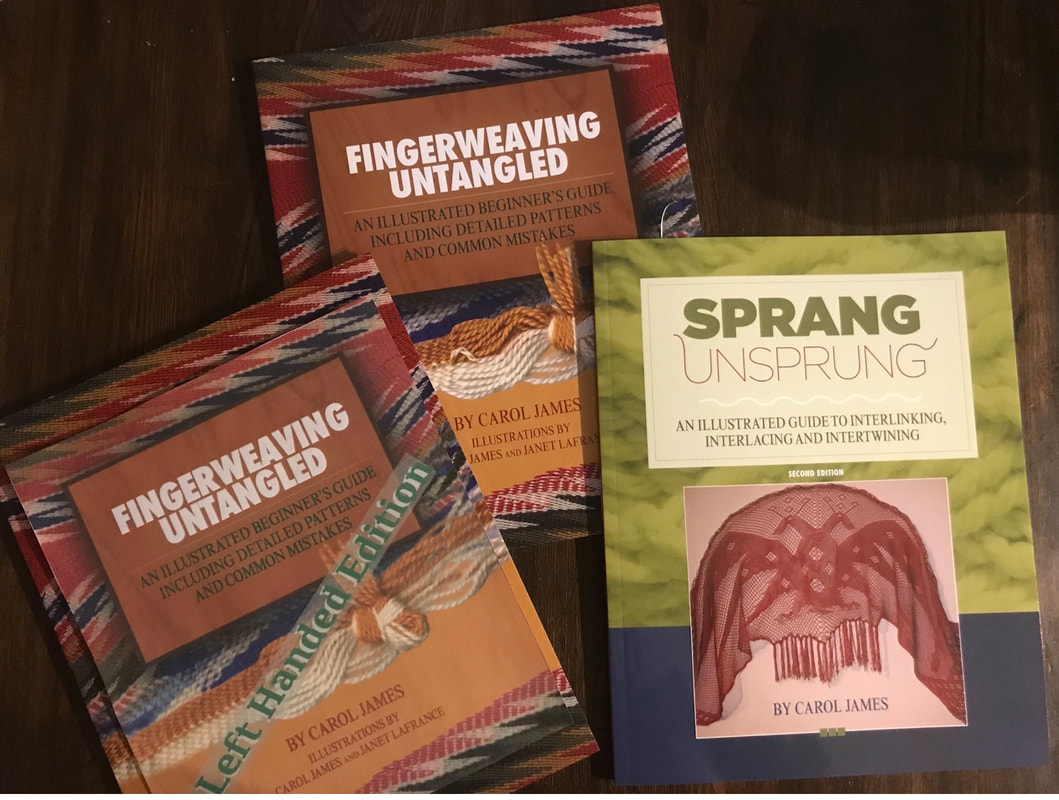
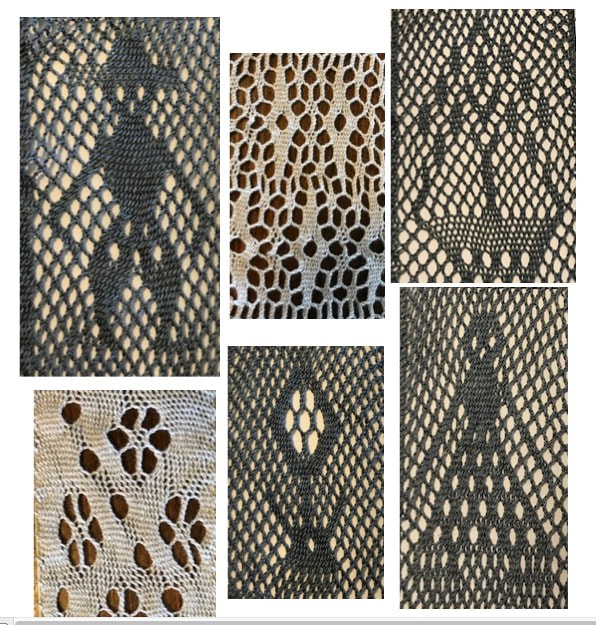
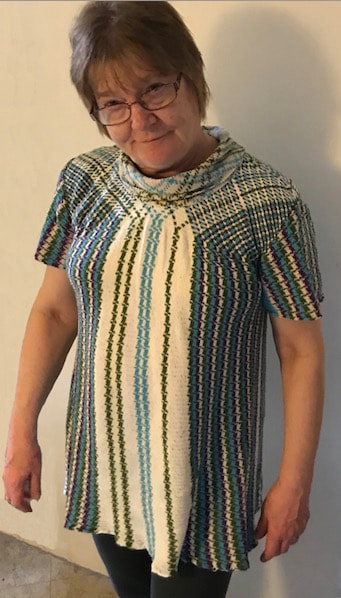
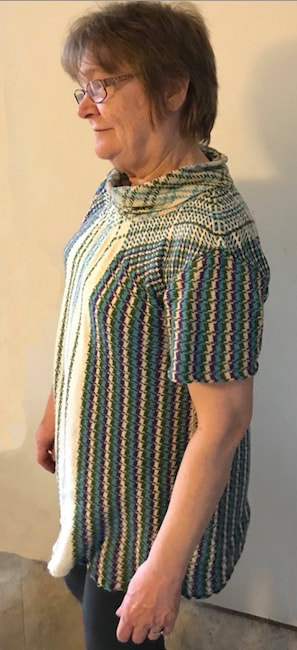
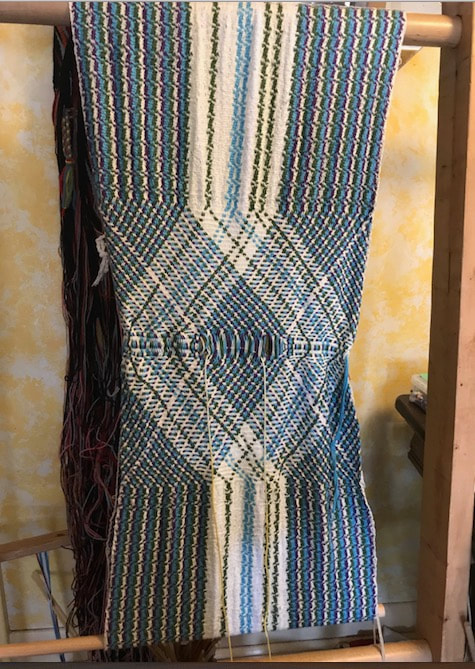
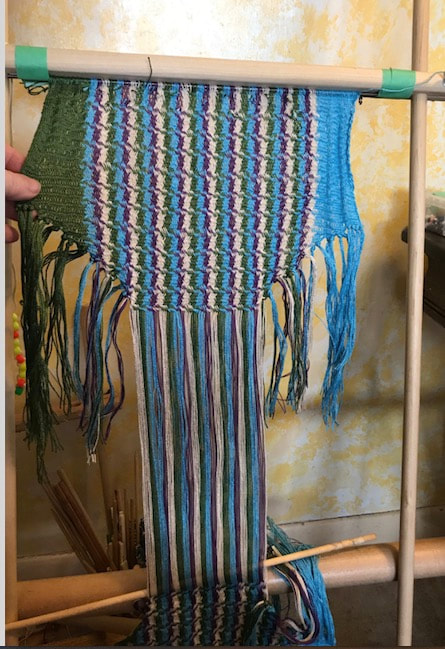
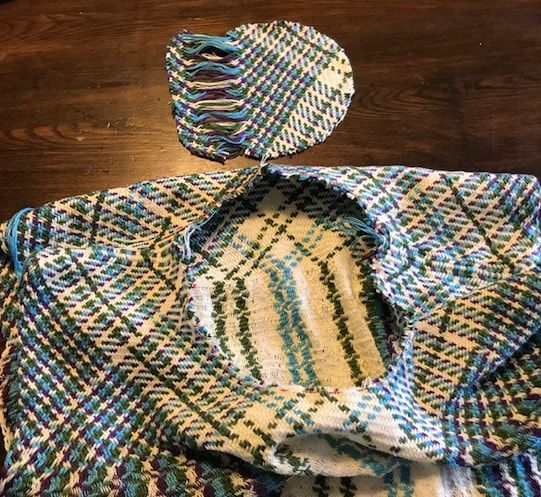
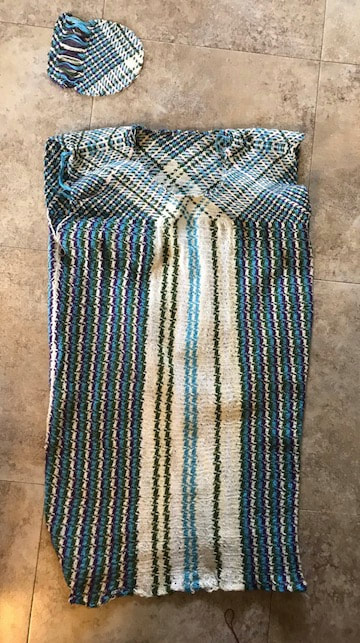
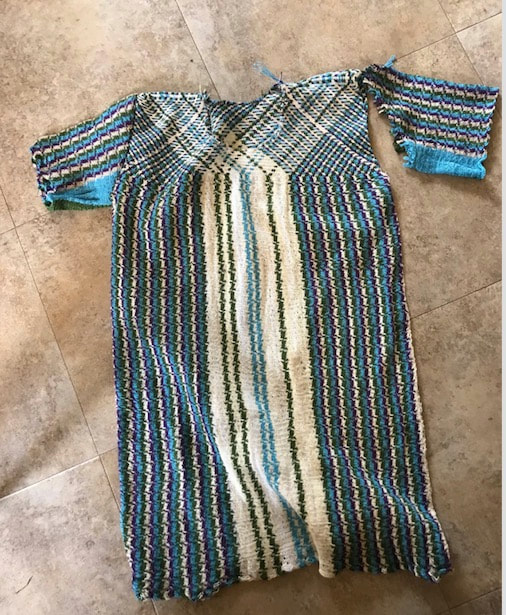
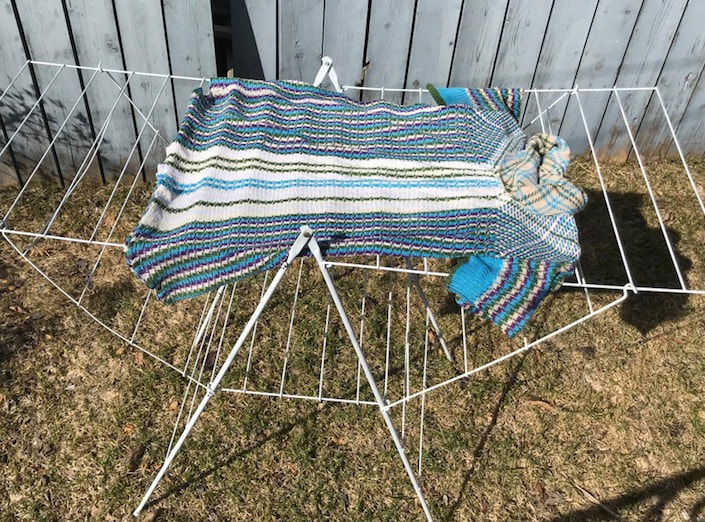
 RSS Feed
RSS Feed